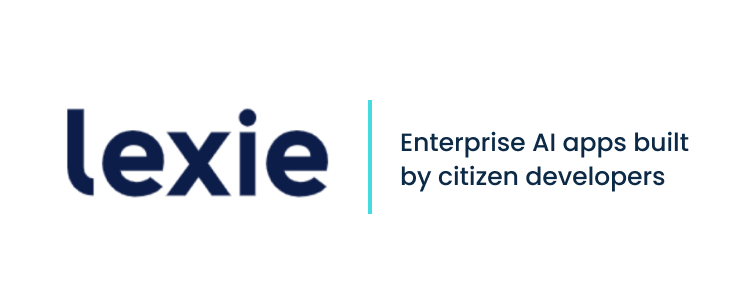Thought Graph and Visitor Workflow Model

The AI transformation is a tangible reality now, and the pressing challenge is to democratize the power of AI for all, not exclusively for tech specialists. Over the last three years, our team at Lexie.ai has been dedicated to developing ‘Thought Graph’—an AI-native programming framework. This framework is grounded in the innovative “Visitor Workflow Model,” which we will explore in depth in this and subsequent blog posts.
In our journey with Thought Graph, we challenge the conventional boundaries of software development. We believe and have steadily worked towards a future where the creation of robust, AI-driven applications isn’t confined to those with traditional coding expertise. Thought Graph is our answer to this challenge, a platform that empowers individuals, especially those with rich domain knowledge, to develop not just prototypes or proof of concepts, but fully-functional, complex applications.
Understanding the Thought Graph Model with Visitor Workflow
The Thought Graph with Visitor Workflow empowers citizen developers to assemble complex systems through an intuitive, no-code approach. This process is akin to a customer visiting an organization with a complex request. The customer is navigated through the workflow and necessary service employees get involved to accomplish the task. Every aspect of the request is broken down into simpler tasks, each managed by different employees. This method mirrors the capabilities of Thought Graph: if a developer possesses the critical thinking skills required to construct an organization, define workflows among employees, and specify each individual’s role, then that developer can adeptly use Thought Graph to become an efficient software developer.
In Thought Graph, the no-code user interface offers a visual tool where citizen developers can seamlessly create workflows using a drag-and-drop mechanism. This is similar to outlining an organization’s structure and the workflow interactions between various employees to complete the tasks. Additionally, developers can use the TG’s AI assistant to develop and modify their workflows using natural language. The visitor model in Thought Graph serves as an algorithm, ensuring each component performs its designated role and efficiently passes tasks to other components, maintaining a cohesive and streamlined workflow.
DMV Analogy
Imagine a Department of Motor Vehicles (DMV) and an individual arriving to obtain their driving license. This person (the visitor) first encounters a receptionist who figures out what the user request is and guides the user for the first step in the process. Then the visitor will visit multiple different agents to go through the process of getting the driving license. He should provide necessary documents and information to an agent, undergo an eye exam and take a photo with another agent, complete a written test with yet another agent, and finally take a driving test. Meanwhile, unseen staff at the DMV perform background checks and document audits, integral to the license issuance process.
Now, imagine we want to create a software to automate the experience in DMV. Without going into too much detail and showing background workflows our high level TG would like the following.

manageable steps, each executed by a component (akin to a DMV agent). Some components interact with the user (the visitor) by asking the user to fill up a form (to collect the visitor’s information), while others may work independently or delegate tasks, all adhering to the application’s defined workflow in Thought Graph. Note that in the digital version of the DMV, still some tasks need to be done by real agents – at least for now – like an eye exam or proctoring the written exam or giving the driving test.
Understanding the parallels between orchestrating DMV workflows and constructing a software application is key:
1. Reception:
DMV – The journey begins with a receptionist who guides you and sets the stage for subsequent steps.
Thought Graph – The root component in Thought Graph figures out the user request and routes it to the right component.
2. Workflow-based Task Management:
DMV – You navigate through various agents for tasks like document verification and eye examinations. Each DMV agent helps the visitor to find the next agent he/she should visit.
Thought Graph – Distinct software components sequentially manage parts of the task, akin to the workflow facilitated by DMV agents.
3. Defining the roles and responsibilities:
DMV – Each DMV agent knows exactly what are his/her roles and responsibilities, including the information needed to gather from the visitor (using forms perhaps) – or the documents he/she needs from the user.
Thought Graph – We also define the description of each component and the type of interaction the agents need to have with the user through the UI.
4. Specialized Agents for Targeted Tasks:
DMV – Certain agents specialize in specific tasks, such as conducting eye exams.
Thought Graph – The application includes specialized components for different functions, similar to DMV specialists.
5. Behind-the-Scenes Operations:
DMV – While you engage with front-office agents, others work quietly in the background, crucial to the DMV’s functionality.
Thought Graph – Certain components function behind the scenes, handling operations like background checks and reviewing the validity of the information.
6.Natural Language Interaction:
DMV – The process involves natural language communication with agents.
Thought Graph – when you build a software with thought graph, the software is AI-native – you can talk to the agents in the app using natural language.
Conclusion: A New Era for Citizen Developers
Thought Graph with Visitor Workflow Model ushers in a new era in software development. It breaks down the barriers of traditional programming, allowing citizen developers to create complex, AI-native applications with ease. This inclusive approach ensures that software solutions are not only technically sound but are also deeply rooted in domain-specific knowledge. As Thought Graph continues to evolve, it stands as a testament to the democratization of technology creation, heralding a future where everyone has the potential to be a developer.
